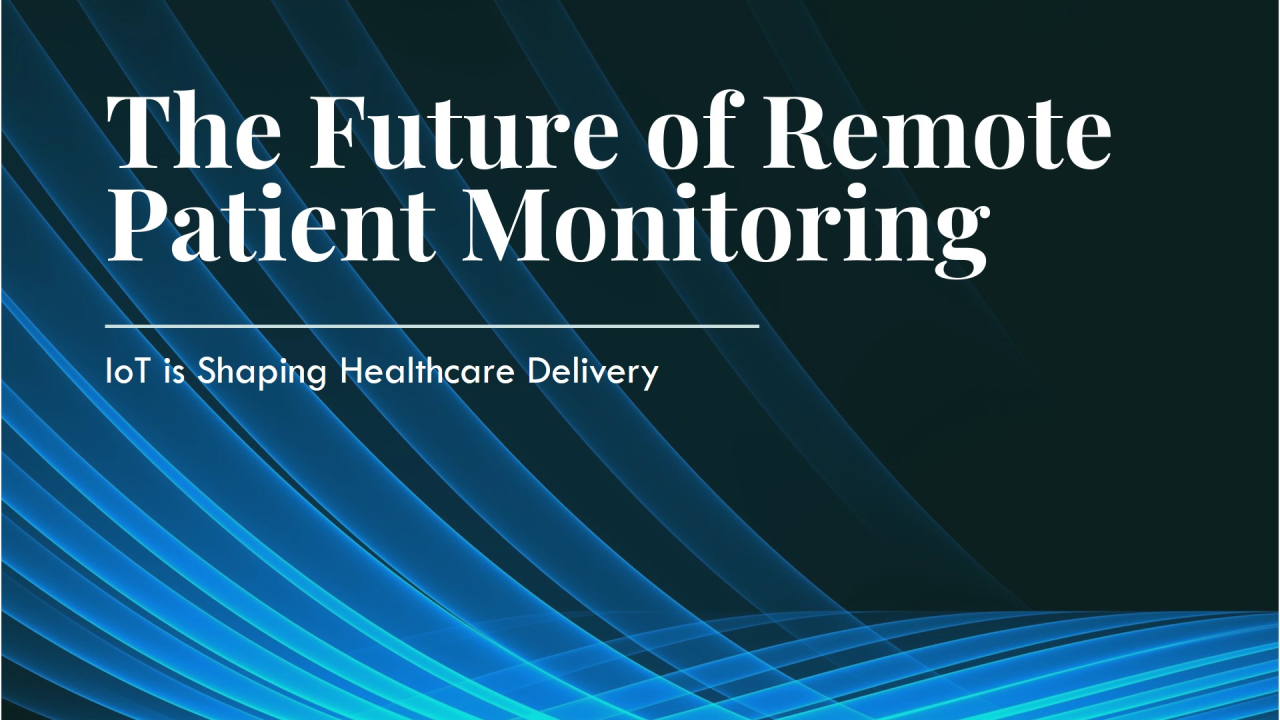As the healthcare industry continues its digital transformation, one area experiencing rapid growth and innovation is remote patient monitoring (RPM). The integration of Internet of Things (IoT) devices is revolutionizing how patients are monitored and cared for, particularly in managing chronic conditions, post-operative recovery, and elderly care. The future of RPM, powered by IoT, promises to enhance patient outcomes, reduce healthcare costs, and improve overall efficiency.
What is Remote Patient Monitoring?
Remote Patient Monitoring involves the use of digital technologies to track patients’ health data in real-time, outside of traditional clinical settings. Connected devices, such as wearable sensors, smart scales, blood pressure monitors, and glucose meters, send vital information to healthcare providers. This allows for continuous monitoring, enabling early detection of health issues and more proactive interventions.
The Role of IoT in RPM
The Internet of Things, with its network of interconnected devices, sensors, and software, is the engine driving the next generation of RPM solutions. IoT-enabled devices capture and transmit data seamlessly, allowing for real-time analysis and decision-making. Here are a few ways IoT is shaping the future of RPM:
Real-Time Data Collection and Analysis
IoT devices collect and analyze data in real time, providing healthcare professionals with immediate insights into a patient’s condition. For example, wearable ECG monitors can alert doctors to irregular heart rhythms, prompting timely interventions and reducing the risk of serious complications like heart attacks.
Improved Patient Engagement
IoT empowers patients to take a more active role in their own health. By using connected devices, patients can monitor their conditions from home, track progress, and communicate more effectively with their healthcare providers. This increased engagement often leads to better adherence to treatment plans and overall health outcomes.
Enhanced Chronic Disease Management
Managing chronic diseases, such as diabetes, hypertension, and COPD, is one of the primary areas where RPM is making a significant impact. IoT devices can monitor critical metrics—like blood sugar levels, blood pressure, and oxygen saturation—around the clock, enabling earlier interventions and reducing the need for emergency care or hospital readmissions.
Reducing Healthcare Costs
By shifting patient monitoring from hospitals to home environments, IoT-enabled RPM reduces the need for in-person visits and lengthy hospital stays. This shift not only eases the burden on healthcare systems but also lowers costs for patients and insurers by preventing complications and improving the efficiency of care delivery.
Personalized Care
IoT provides healthcare professionals with a wealth of patient-specific data, allowing them to offer more personalized care. With insights into a patient’s daily patterns and health fluctuations, doctors can tailor treatments and recommend lifestyle adjustments that better suit each individual’s needs.
Challenges and Considerations
While IoT and RPM offer numerous benefits, there are challenges to address as these technologies become more widespread:
Data Privacy and Security: With more data being collected and transmitted, ensuring that patient information is secure is paramount. Healthcare providers and device manufacturers must implement robust cybersecurity measures to protect against data breaches.
Interoperability: Many healthcare systems struggle with integrating IoT devices into their existing infrastructure. Ensuring seamless data sharing between devices, platforms, and electronic health records (EHRs) is critical for the success of RPM.
Regulatory Hurdles: As RPM and IoT technologies evolve, regulatory frameworks need to adapt. Ensuring compliance with healthcare regulations like HIPAA and FDA guidelines is essential for the safe and effective deployment of these solutions.
The Road Ahead: A Connected Future
As IoT technologies advance and 5G networks expand, the capabilities of RPM will continue to grow. In the near future, we can expect more sophisticated devices that monitor a broader range of health metrics, enhanced predictive analytics for preemptive care, and greater integration with artificial intelligence (AI) to offer personalized, real-time feedback to both patients and providers.
The future of healthcare will be increasingly driven by remote, data-driven care, making it more accessible, efficient, and personalized. IoT’s role in RPM is paving the way for a patient-centric model where individuals are empowered to manage their health, and healthcare providers can deliver more precise and timely care.
Healthcare delivery is being transformed by IoT-powered Remote Patient Monitoring, offering a more proactive and personalized approach to care. As these technologies continue to evolve, they hold the promise of not only improving patient outcomes but also reshaping the entire healthcare landscape.
Stay tuned for more insights from Ingenuity Group’s Digital Digest as we explore the latest in healthcare innovation!

